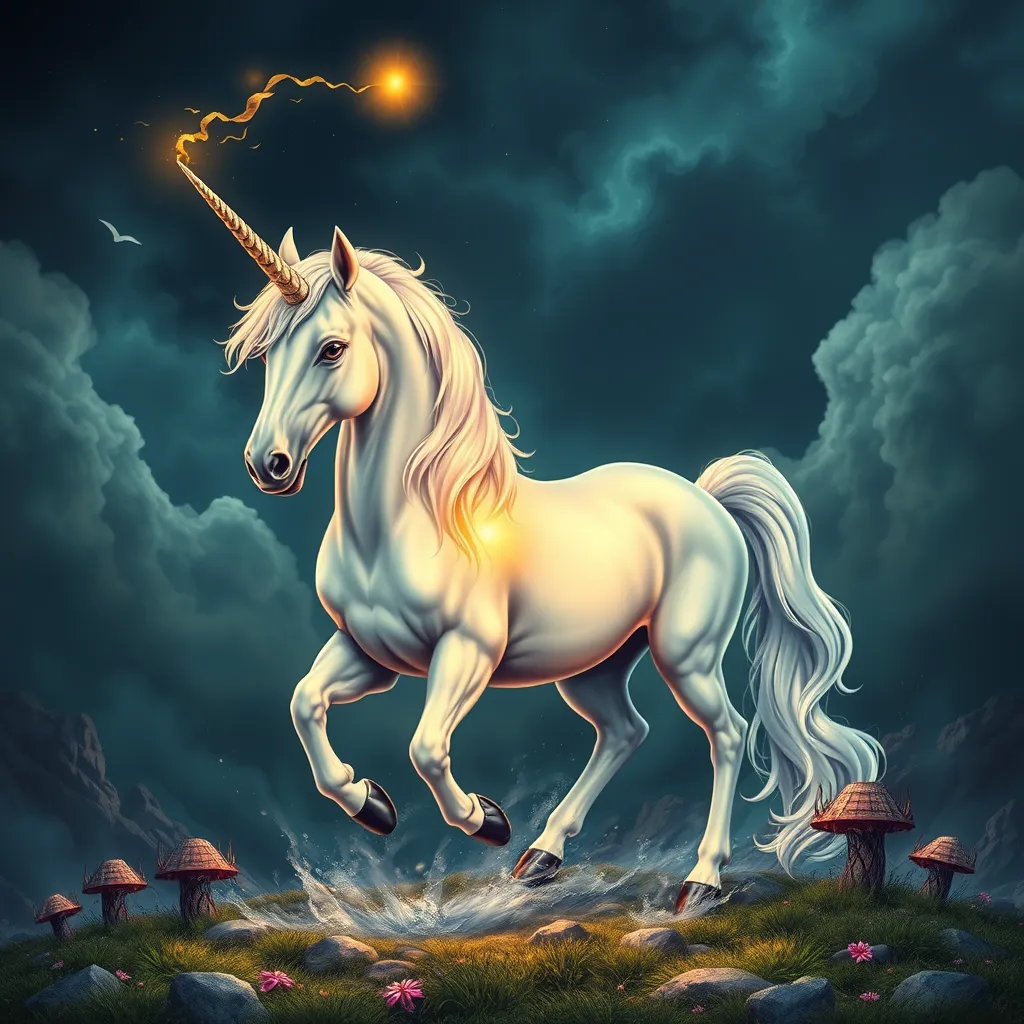Unicorns and Healing: The Mythical Beast’s Medicinal Properties
I. Introduction
Throughout history, the unicorn has captured the imagination of cultures around the world. This mythical creature, often depicted as a horse-like figure with a spiraled horn protruding from its forehead, has been associated with purity, grace, and healing. The allure of unicorns is not just found in fairy tales; they hold a significant place in various healing traditions and folklore.
The cultural significance of unicorns in healing is profound, as they are often seen as symbols of hope, renewal, and the possibility of miraculous cures. This article aims to explore the historical and cultural contexts of unicorns in medicine, the folklore surrounding their healing properties, and the modern interpretations of these mythical beings in contemporary wellness practices.
II. Historical Context of Unicorns in Medicine
A. Ancient texts and references to unicorns
Unicorns have been referenced in various ancient texts, including those from the Greeks, Romans, and later, European medieval literature. The earliest descriptions of unicorns can be traced back to ancient Greek historians such as Ctesias, who wrote about a creature resembling a horse with a single horn.
B. Unicorn horns as a symbol of healing (e.g., alicorn)
During the Middle Ages, the unicorn’s horn, known as the “alicorn,” was believed to possess extraordinary healing properties. It was thought to cure ailments such as fever, plague, and even poisoning. The demand for alicorn led to the trade of narwhal tusks, which were sold as unicorn horns, highlighting the intersection of myth and commerce.
C. Beliefs surrounding unicorns in various cultures
- In ancient China, unicorns were considered omens of good fortune, often associated with the arrival of wise rulers.
- In Hindu mythology, the unicorn is linked to the god Shiva and considered a symbol of purity.
- European folklore often portrayed unicorns as elusive creatures that could only be tamed by a virgin, symbolizing purity and innocence.
III. The Unicorn in Folklore and Its Healing Associations
A. Stories and legends of unicorns as healers
Numerous legends depict unicorns as healers. One famous story tells of a unicorn that healed a sick child by allowing its horn to touch the child’s forehead. Such narratives emphasize the unicorn’s role as a bridge between the earthly and the divine, capable of performing miraculous acts of healing.
B. The symbolism of purity and innocence in healing
The symbolism associated with unicorns often revolves around themes of purity and innocence, which are essential components in many healing traditions. The belief that only the pure of heart could approach a unicorn reinforces the idea that true healing comes from a place of inner purity.
C. The unicorn’s role in various mythologies
In various mythologies, unicorns are depicted as protectors of nature and sources of healing. Their presence is often seen as a sign of hope and renewal, making them integral to many cultural healing practices.
IV. The Science Behind the Myths: Are Unicorns Real?
A. Exploring the origins of unicorn myths
The origins of unicorn myths can be traced back to misinterpretations of real animals. The description of a single-horned creature likely stemmed from sightings of animals such as the rhinoceros or the narwhal, whose long tusks may have inspired tales of unicorns.
B. The connection between unicorns and real animals (e.g., narwhals)
Narwhals, known for their long, spiral tusks, have often been confused with unicorns. These whales were sometimes hunted for their tusks, which were sold as the coveted unicorn horn. This connection illustrates how real animals can influence mythical narratives.
C. Influence of cultural imagination on medical practices
Cultural imagination plays a significant role in shaping medical practices. The belief in unicorns as sources of healing reflects a broader human tendency to find hope in the extraordinary. While unicorns may not exist, their symbolism continues to inspire various healing traditions.
V. Modern Interpretations of Unicorns in Healing
A. Unicorns in contemporary wellness practices
In recent years, the image of the unicorn has found new life in contemporary wellness practices. From yoga classes themed around unicorns to mindfulness exercises that incorporate unicorn imagery, these practices aim to evoke feelings of joy and positivity.
B. The rise of unicorn-themed products in alternative medicine
- Unicorn-inspired supplements claiming to boost mood and energy.
- Essential oils and aromatherapy products marketed with unicorn branding.
- Holistic healing practices that incorporate unicorn symbolism to enhance emotional well-being.
C. Psychological effects of unicorn imagery on healing
Research suggests that engaging with positive imagery, such as unicorns, can have beneficial psychological effects. This includes reducing stress and anxiety, promoting relaxation, and fostering a sense of happiness, which are all conducive to healing.
VI. Unicorns in Art and Literature: Healing through Creativity
A. Representation of unicorns in art and literature
Unicorns have been a popular subject in art and literature for centuries. From medieval tapestries to modern fantasy novels, these creatures often symbolize beauty and grace, embodying the essence of healing through creativity.
B. The therapeutic benefits of unicorn-themed creative expression
Engaging in creative activities that involve unicorn themes can provide therapeutic benefits. Art therapy, for instance, allows individuals to express their feelings and emotions through the lens of unicorn symbolism, fostering healing and self-discovery.
C. Case studies of unicorn symbolism in healing narratives
Numerous case studies highlight how unicorn symbolism has been used in healing narratives, particularly in children’s literature. Stories that feature unicorns often convey messages of resilience, hope, and the power of believing in the extraordinary.
VII. Critiques and Controversies Surrounding Unicorn Healing
A. The skepticism of unicorn-related healing claims
Despite the enchanting nature of unicorns, skepticism surrounds claims of their healing properties. Critics argue that relying on mythical creatures for healing can detract from evidence-based medical practices.
B. Ethical considerations in promoting mythical healing practices
Promoting unicorn-related healing practices raises ethical questions. It is essential to balance the allure of mythology with the necessity of scientific validation, ensuring that individuals are not misled by fantastical claims.
C. Balancing tradition with modern medical science
The challenge lies in finding a balance between traditional beliefs and modern medical science. While unicorns may not offer tangible healing, their symbolism can still play a role in holistic wellness, serving as a reminder of the importance of hope and positivity in the healing journey.
VIII. Conclusion
Unicorns, as mythical beings, have long been associated with healing and purity. Their enchanting presence in folklore and culture continues to inspire hope and creativity in healing practices today. The legacy of unicorns in cultural healing traditions endures, reminding us of the power of belief and imagination in the face of adversity.
As we move forward, further research and exploration of mythical healing traditions can provide valuable insights into the intersection of culture, mythology, and well-being. Whether as symbols of hope or as catalysts for creative expression, unicorns will undoubtedly continue to hold a special place in the hearts of many.




